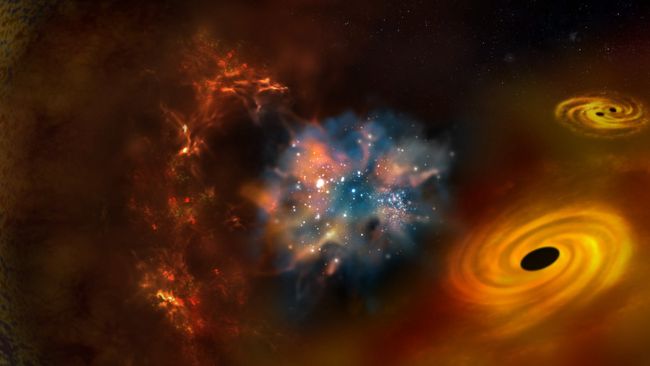New Study Suggests the Universe Had a Hidden History Before the Big Bang
The secrets of black holes and dark matter could lie before the Big Bang, a new study of “bouncing” cosmology hints.
The Big Bang might not have marked the universe’s beginning, according to a cosmological theory that suggests the universe could “bounce” between phases of contraction and expansion. If true, this theory could reshape our understanding of the cosmos, including its most mysterious components: black holes and dark matter.
A recent study proposes that dark matter might be made up of black holes formed during the transition from the universe’s last contraction phase to the current expansion phase, which occurred before the Big Bang. If this hypothesis is correct, the gravitational waves produced during the formation of these black holes could be detected by future gravitational wave observatories, offering a potential way to confirm this dark matter origin theory.
Observations of stellar movements in galaxies and the cosmic microwave background—the afterglow of the Big Bang—indicate that about 80% of the universe’s matter is dark matter, a substance that neither reflects, absorbs, nor emits light. Despite its prevalence, the exact nature of dark matter remains unknown.
In this new study, researchers examined a scenario where dark matter consists of primordial black holes formed from density fluctuations during the universe’s last contraction phase, just before the expansion phase we observe today. Their findings were published in June in the Journal of Cosmology and Astroparticle Physics.
The bouncing cosmos
For centuries, people believed in a cosmological model where the universe start as singularity and then went through the process of inflammation. However, the authors of the new study also considered a less conventional model referred to as non-singular matter bouncing cosmology according to which the universe initially contracted. This phase was followed by a rebound, owing to high density of matter and hence the big bang and the increase in rate of infrastructure as evident today.
It postulates that the universe shrinked to a volume that was 50 orders of magnitude smaller than it is today in this bouncing cosmology model. Later on, the photons appeared and other particles, hence the setting Free at the time of the Big Bang. During the rebound, the density of matter was high; thus, black holes of ‘ Primordial ‘, arising from quantum density fluctuations in the formation of matter, emerged as possible dark matter.
”If they were not too small, their Hawking evaporation would not be efficient enough to vanish them, and they could be around today,” explained Patrick Peter, director of research at the French National Centre for Scientific Research (CNRS), who was not involved in the study, in an email to Live Science. ‘Such black holes which are as massive as an asteroid could solve the mystery of dark matter and or explain what this is. ’
Self-consistent calculations the scientists made prove that the parameters of this universe model correlate with the contemporary measurements, including space curvature and the microwave background, thus supporting their hypothesis.
In order to consolidate their forecasts, the researchers are going to employ newly developed gravitational wave telescopes. They estimated characteristics of gravitational waves generated during black hole formation in their model and concluded that these waves can be observed by future facilities, mainly LISA and Einstein Telescope. Measuring these waves would help pin down whether or not primordial black holes are among the dark matter, though it may take more than a decade before these observatories are up and running.
‘I pointed out that there were some natural explanations for small but persistent black holes forming and behaving as dark matter within this model that is not in the standard inflationary model’ Peter said. “Other such studies are now in progress to understand the behavior of such small black holes around the stars which may be suggestive of their detection in the future. ”
Do not forget to share your opinion with us to provide you with the best posts !




0 Comments